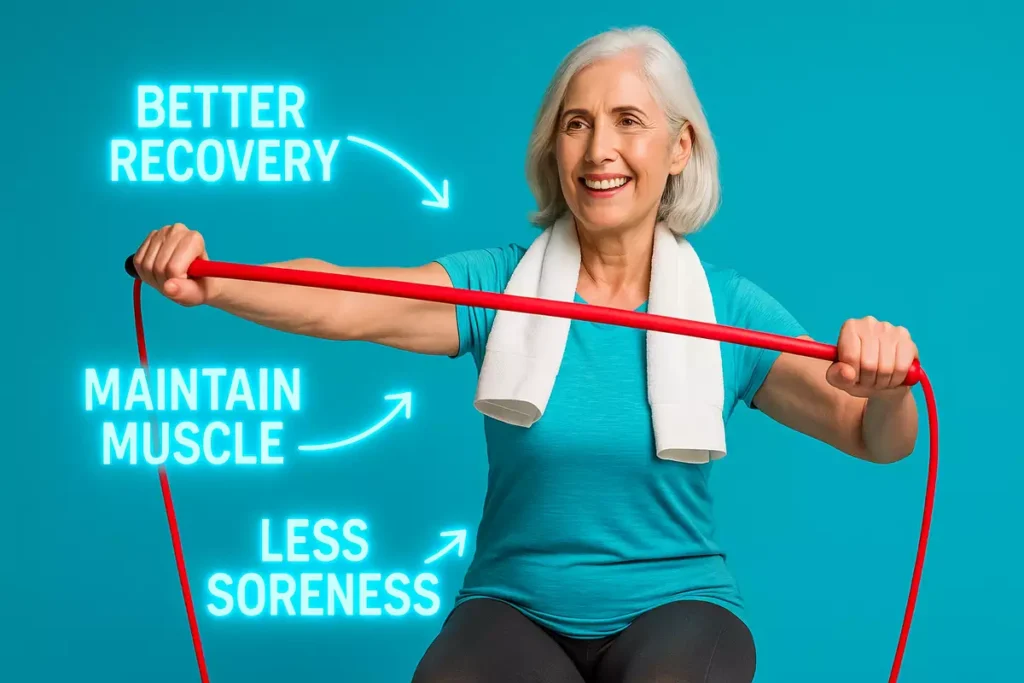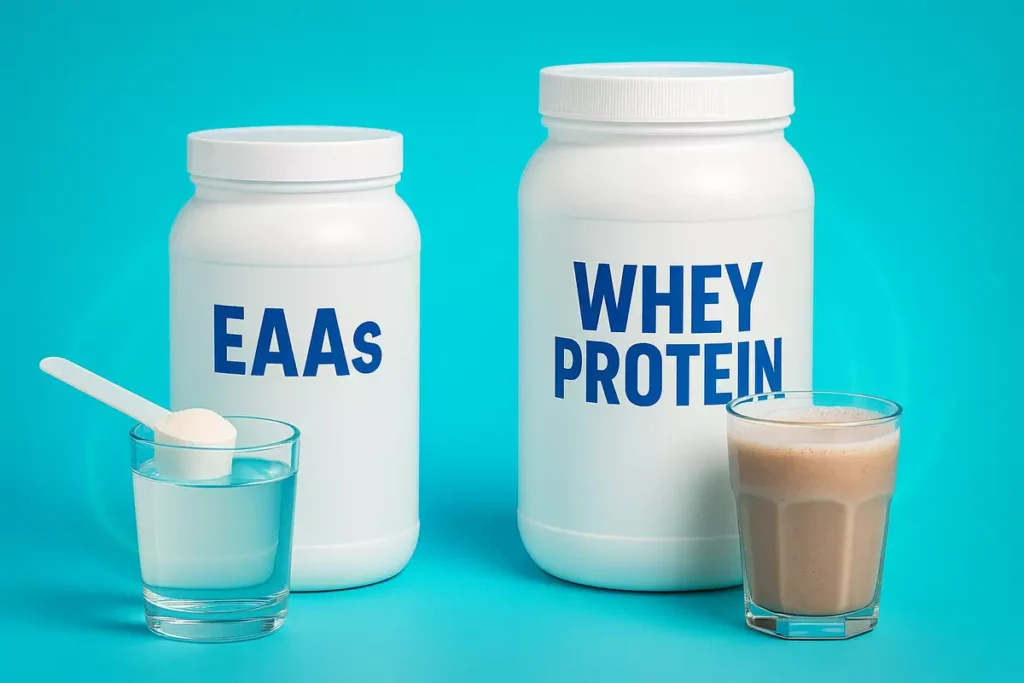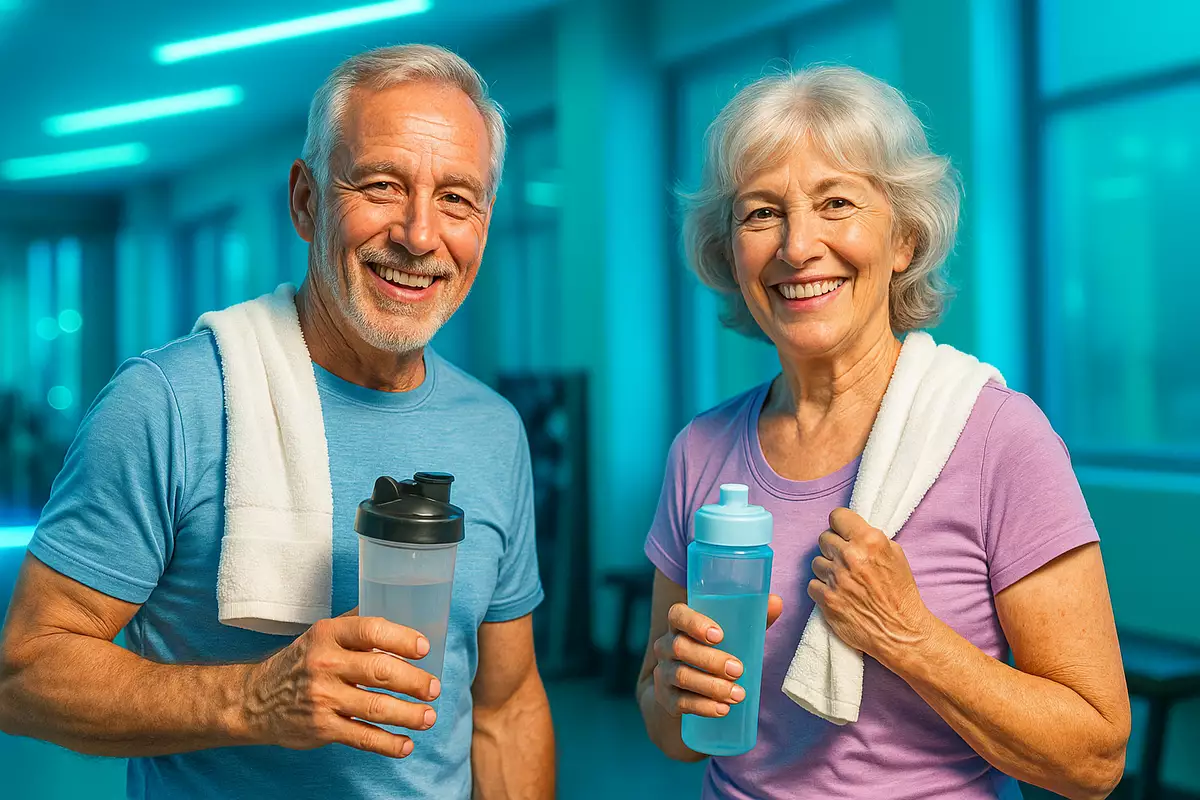Losing muscle with age isn’t just normal—it’s expected. But that doesn’t mean you’re powerless.
If you’re over 60 and noticing weakness, slower recovery, or less strength during simple activities, it could be sarcopenia in action.
The good news? You can fight back. Essential Amino Acids (EAAs) offer a fast, effective way to protect your muscles—without overloading your stomach.
In this guide, you’ll discover how EAAs help older adults stay strong, recover better, and keep moving with confidence.
Table of contents
Quick Answer – Do EAAs Help Older Adults Preserve Muscle?
Yes—EAAs (Essential Amino Acids) can absolutely help older adults maintain and even build muscle.
They’re especially useful if you’re over 60 and struggling with low appetite, poor digestion, or declining strength. EAAs are fast-absorbing, easy to digest, and can kickstart muscle protein synthesis even in a fasted state.
In my experience as a coach, older clients who added EAAs to their routines often felt stronger, recovered faster, and stayed more consistent with their training—especially when it was difficult to consume enough protein through food alone.
If you’re already using EAAs and want to preserve lean tissue during a cut, check out this practical guide:
👉 EAAs for Cutting & Muscle Preservation
Why Muscle Loss Accelerates With Age

Let’s be honest—aging comes with some tough changes. After age 40, muscle mass naturally starts to decline, and this loss speeds up after age 60.
This condition is called sarcopenia, and it affects strength, stability, and everyday movement. It’s one of the biggest reasons older adults become more prone to falls and fatigue.
One major factor behind this decline is anabolic resistance. As we age, the body becomes less responsive to the muscle-building effects of protein.
That means older adults need more high-quality protein, particularly leucine, to stimulate muscle protein synthesis effectively.
This is where EAAs become incredibly valuable. They deliver all nine essential amino acids—especially leucine—in a concentrated, bioavailable form that the aging body can absorb and use quickly.
How EAAs Work in the Body
EAAs are the building blocks your body can’t produce on its own. To preserve or grow muscle, your body must get these amino acids through diet or supplements.
Leucine, in particular, is the key player here. It acts like an ignition switch that triggers the muscle-building process—even in smaller doses.
Because EAAs are already broken down, they don’t require digestion like whole proteins. That’s why they work faster and more efficiently, especially for seniors with slower metabolism or digestive issues.
Many of my older clients report improved recovery and energy when sipping EAAs during or after low-impact workouts. If you want to know exactly how long EAAs stay active in your system, I recommend reading this post:
👉 How Long Do EAAs Stay in Your System?
Real Benefits of EAAs for Seniors

Let me tell you about Barbara, a 68-year-old client who had lost a lot of strength after knee surgery.
She walked daily but wasn’t seeing much progress. We added resistance band exercises and a daily EAA supplement. Within two months, her balance improved, and she could do step-ups again without support.
Then there’s John, age 70, who had given up hiking due to weakness and fatigue.
After just a few weeks of light dumbbell workouts and consistent EAA intake, he told me, “I finally feel like myself again.” Three months later, he was hiking with his grandson—stronger and more confident than before.
Here’s what EAAs helped them achieve:
- Faster recovery between sessions
- Better muscle tone and energy
- Easier progress from consistent effort
Many older clients prefer taking EAAs even on rest days to stay anabolic. Here’s why:
👉 Do You Need EAAs on Rest Days?
When and How to Take EAAs for Best Results
I usually suggest that older adults take EAAs:
- Right after light workouts or daily walks
- Between meals, to trigger muscle protein synthesis
- Before or after physical therapy, if applicable
The sweet spot for dosage is 5 to 10 grams, depending on body weight.
Start with small amounts if you’re new. Mix into cold water and sip slowly. This keeps your body hydrated while delivering a clean shot of muscle-building fuel.
If you’re picky about ingredients or sensitive to sweeteners, check this list of clean, flavor-friendly options:
👉 Best EAAs Without Artificial Sweeteners
👉 Mixing EAAs With Electrolytes or Hydration Boosters
EAAs vs Whey Protein for Aging Muscles

Whey protein is excellent—if you can handle it.
But many older adults experience digestive issues or don’t feel hungry enough to down a full 30g shake regularly. That’s where EAAs shine.
They’re:
- Lower in volume
- Easier to digest
- Faster to act
Thomas, age 72, felt bloated every time he drank whey. When we switched him to EAAs, he was more consistent, and his strength started improving again.
If you’re plant-based or lactose intolerant, EAAs can be a lifesaver. For that, check this:
👉 EAAs for Vegan Muscle Growth
Want to time your EAA intake for maximum effect? This guide breaks it down:
👉 EAAs: Pre-Workout vs During Workout
Final Verdict – Are EAAs Worth It for Older Adults?
In my honest opinion? Absolutely yes.
EAAs are one of the smartest tools for preserving strength and muscle after age 60.
They’re not a replacement for training or whole foods—but they’re incredibly helpful if you:
- Can’t eat enough protein daily
- Struggle with digestion
- Want faster recovery
If you’re feeling weaker with age or just trying to keep your strength, start small. Combine EAAs with movement—like light dumbbell workouts, resistance bands, or even chair exercises.
Don’t underestimate your potential. I’ve seen people in their 60s and 70s turn things around completely.
Stay active. Stay consistent. You’ve got more strength in you than you think.



Leave a Reply